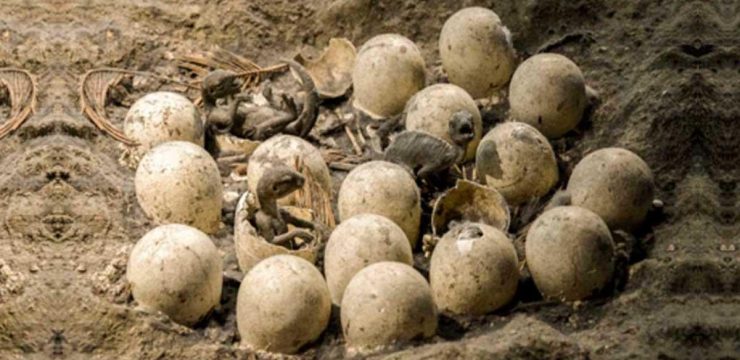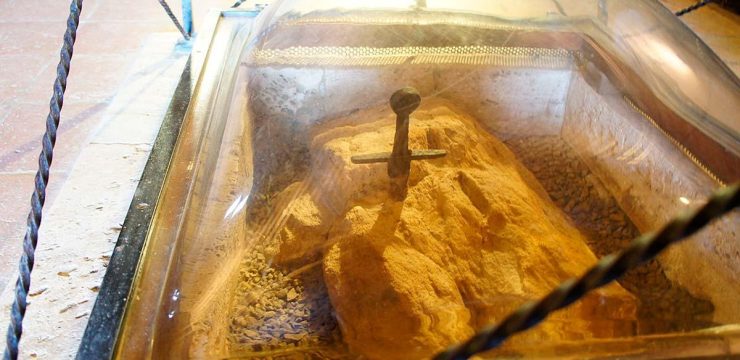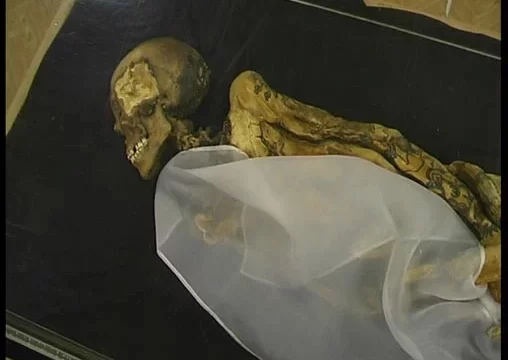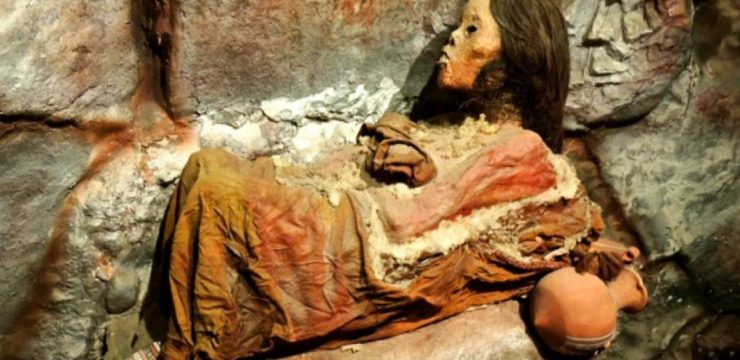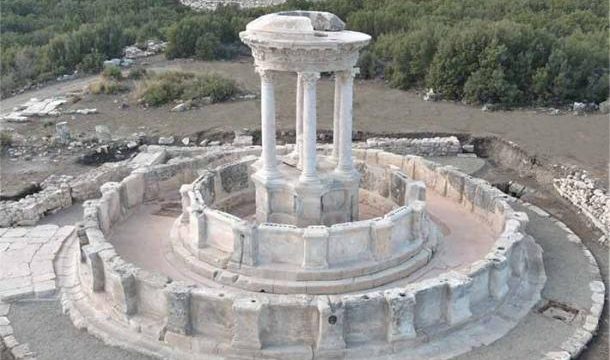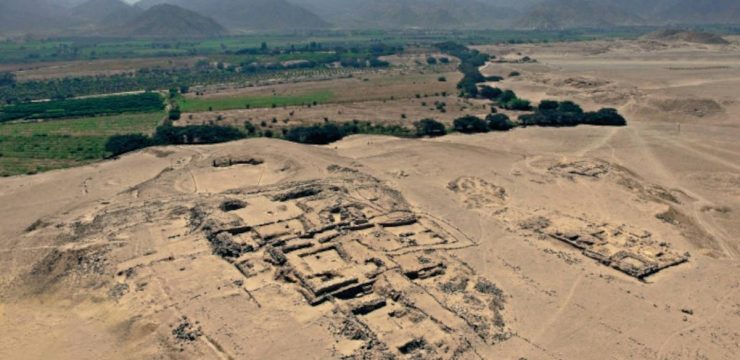While diving off the coast of Carmel in northern Israel, Shlomi Katzin, a recreational diver from the town of Atlit, made a discovery that would astonish archaeologists and history enthusiasts around the world. During what seemed like an ordinary dive in the Mediterranean Sea, Katzin’s attention was caught by a glimmer beneath the shifting sands on the seafloor. Curious, he swam closer—and what he uncovered turned out to be an extraordinary artifact: a centuries-old sword, remarkably preserved despite the passage of time.
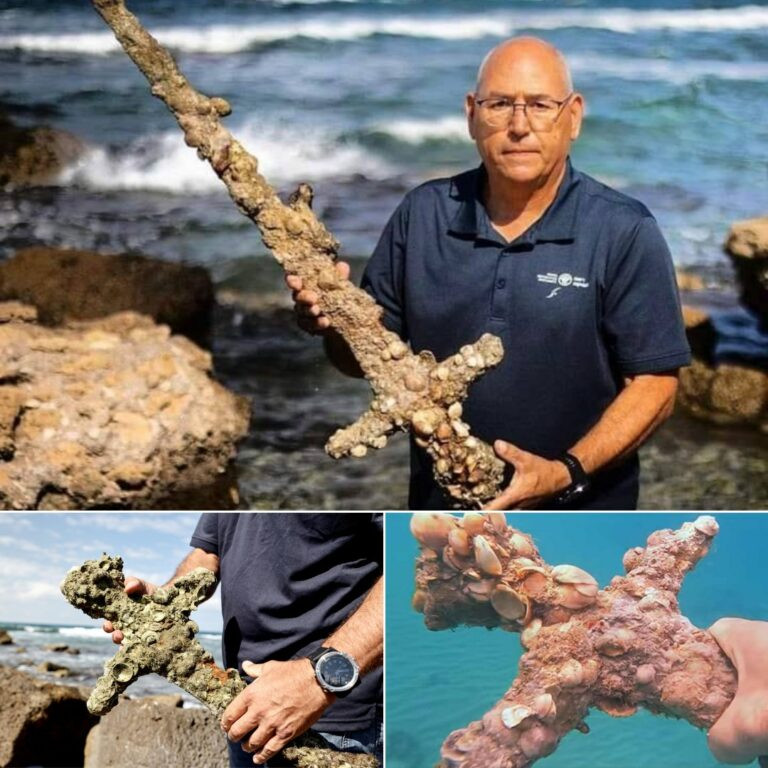
The sword, measuring over 39 inches in length, was encrusted with marine life but still unmistakably impressive in its form and detail. Experts believe this ancient weapon dates back to the era of the Crusades, a turbulent period in the medieval world characterized by religious wars, epic journeys, and deeply rooted cultural clashes. Katzin, recognizing the potential historical significance of his find, made the responsible decision to carefully retrieve the object and notify the Israel Antiquities Authority (IAA) without delay.
What he had found was far more than a forgotten relic; it was a direct connection to a time nearly 900 years ago when Crusader knights roamed the region, leaving behind only fragments of their dramatic and often violent presence. The sword wasn’t buried alone. Scattered nearby were the remains of stone and metal anchors and fragments of pottery—silent witnesses to an era long past. These relics collectively told a deeper story, painting a picture of maritime activity, trade, and war that once played out in these very waters.
Nir Distelfeld, an inspector for the IAA, was quick to confirm the authenticity of the sword. According to him, “The sword, which has been preserved in perfect condition, is a beautiful and rare find and evidently belonged to a Crusader knight.” Despite being coated in layers of marine organisms after spending centuries underwater, the sword’s shape and craftsmanship could still be admired. The iron blade, though corroded by time, stood as a testament to the blacksmith’s skill and the knight’s status.
This discovery sheds new light on the Carmel coast, a region long known to marine archaeologists as a rich historical site. Kobi Sharvit, head of the IAA’s Marine Archaeology Unit, noted that this coastal stretch has served for millennia as a natural anchorage point. Its calm, protective waters attracted ancient ships seeking refuge from sudden Mediterranean storms. As a result, it has become a kind of underwater time capsule, preserving layers of maritime history ranging from the Late Bronze Age—some 4,000 years ago—up through the medieval period and beyond.
Over the years, countless artifacts have been recovered from the seabed along this coastline. Anchors, cargo remnants, tools, and even shipwrecks have helped archaeologists piece together the region’s role as a vital passageway and battleground. The newly discovered sword adds yet another layer to this unfolding story—one rooted not just in ancient trade but in the cultural and military clashes that defined the Crusades.
The Israel Antiquities Authority has already begun the process of preserving the sword. It will undergo careful cleaning and analysis at the IAA’s laboratories. This meticulous work will allow researchers to determine more precise details about the sword’s origin, materials, and the historical context of its use. Was it wielded in a pivotal battle? Did it once belong to a prominent knight? These are the types of questions archaeologists hope to answer in the coming months.
Once the restoration and study are complete, the sword will be put on public display, giving the people of Israel—and the world—a chance to view this extraordinary piece of human history up close. For many, seeing such an artifact in person provides a tangible connection to the past, bridging centuries through the silent language of craftsmanship, conflict, and legacy.
While Shlomi Katzin had no formal archaeological training, his sharp eye and quick thinking have made an invaluable contribution to the preservation of history. In recognizing the importance of the object and acting responsibly by contacting the proper authorities, he has helped ensure that the sword—and the stories it carries—will be preserved for generations to come.
This remarkable event is a powerful reminder of how history can lie just beneath the surface, waiting to be discovered. Beneath the waters of the Mediterranean lies a vast and largely unexplored repository of cultural memory. Each new find, whether a shattered pot or a knight’s weapon, adds another page to the ongoing story of human civilization.
More than just a fascinating tale of luck and discovery, this incident also underscores the enduring significance of Israel’s coastal waters. As modern life continues to evolve, the past remains etched in the sea floor, offering silent testimony to the people and events that shaped history. The Crusader sword found by Katzin not only brings the medieval world to life but also serves as a powerful symbol of how interconnected our past and present truly are.
What began as a casual dive on a sunny day has now become a significant archaeological milestone. The ancient sword, resting undisturbed for centuries, now stands as a reminder of the human journey—marked by ambition, conflict, and discovery. Thanks to Katzin’s actions and the work of dedicated archaeologists, a small but vital piece of that journey has been brought back into the light.
